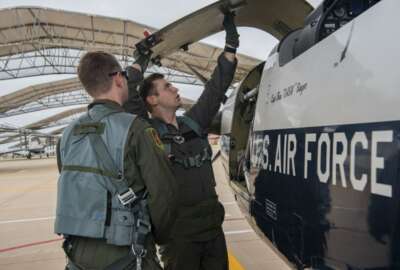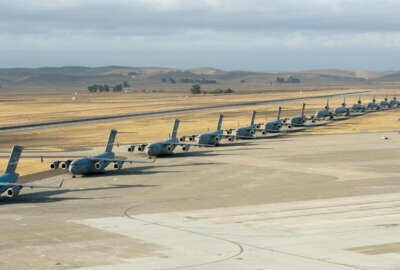
Air Force official stresses vitality of compromise between industry, government
Lt. Gen. Duke Richardson, the Air Force's top acquisition authority, tells government officials it's time to give more credit to industry requests for contracts...

As government contracting becomes more and more complicated, the defense community must learn how to heed industry requests more often. Lt. Gen. Duke Richardson, recently appointed the Air Force’s top acquisition official, said an agreement goes both ways.
At a June 19 Life Cycle Industry Days event in Dayton, Ohio, Richardson told the audience that industry should only push back if what the government asks for doesn’t add value to the contract, and the government should always try to compromise unless it would hurt the department’s integrity.
“This is not any of our money, it’s not Air Force money, its taxpayer money,” Richardson said at the event, shared on Agency in Focus: Air Force. “We better do our best to be great shepherds of it.”
But what does that mean? Richardson said his team came up with seven foundational-level principles to determine how they’re using government appropriated funds when it comes to contracts:
- Law enforcement, or following what’s written in law
- Performance assurance, making sure there’s the proper amount of government oversight every step of the way.
- Contract specification, making sure all of the requirements are met.
- Asset accountability, ensuring taxpayer money is safe and appropriated correctly.
- Proper certifications for contracts
- Options preservation, or having enough data to make the proper decision.
- Due diligence
Richardson said it is incredibly important during a contract negotiation to be sure it’s all legal and everyone’s needs are met, from the industry side to the government. He said if a contractor isn’t happy with the terms of conditions, the ground rules, assumptions, they’re not going to sign the contract.
He gave the example of a five-month process alongside Boeing to replace Air Force One, the president’s aircraft.
“We had to get to a position where the terms and conditions were satisfactory, so that Boeing felt they could be successful. But also satisfactory so that we thought we could do our government responsibilities. And I could stand in front of an audience like this and defend exactly what we did,” he said. “…If it didn’t hurt us to give some, we gave some. If it hurt, then we thought about it a little more. We gave where we could and everybody said yes to the final agreement… I’m proud of the deal we got.”
Government and industry both need a hands-on role once a contract is signed. Agencies can’t just wait until the end and pass it over to a general board for review. There’s a certain amount of vendor involvement necessary, such as attending a design review, Richardson said.
However, he said, if the government agency tries to overreach or attach unnecessary requirements to programs, it’s OK for industry leaders to hesitate. Unneeded requirements are just roadblocks to success and add cost.
“I think it’s a misconception that industry and government don’t have aligned interests, we actually do, they’re very aligned. If we don’t deliver, we both look bad, very bad. No one cares about why and what the excuses are,” he said. “You can blame [industry] all you want. But guess what government program office? You’re responsible… Or Lockheed, or Boeing, or Northrop or whoever… you can blame the government program office. But guess what? You’re part of that team too.”
The Air Force One contract transformed Richardson’s thoughts on acquisition. He said one of his goals as the top acquisition authority for the Air Force is to form more partnerships with industry and stop acting like the government has an infinite bag of money.
Extensive debating, especially after a decision authority has approved a contract, is distracting. Richardson said he doesn’t like to waste time revisiting or rethinking past decisions, unless new information has developed or the facts have changed. But he does want to keep the taxpayer’s informed on how money is used and for what purpose.
“I want you to ask… if this was your money, would you do this?” he said to the room of industry and government participants.
Copyright © 2024 Federal News Network. All rights reserved. This website is not intended for users located within the European Economic Area.
Steff Thomas is a digital editor at Federal News Network.
Related Stories

New Air Force installations strategy plans for sustained budget increases and demolished buildings




